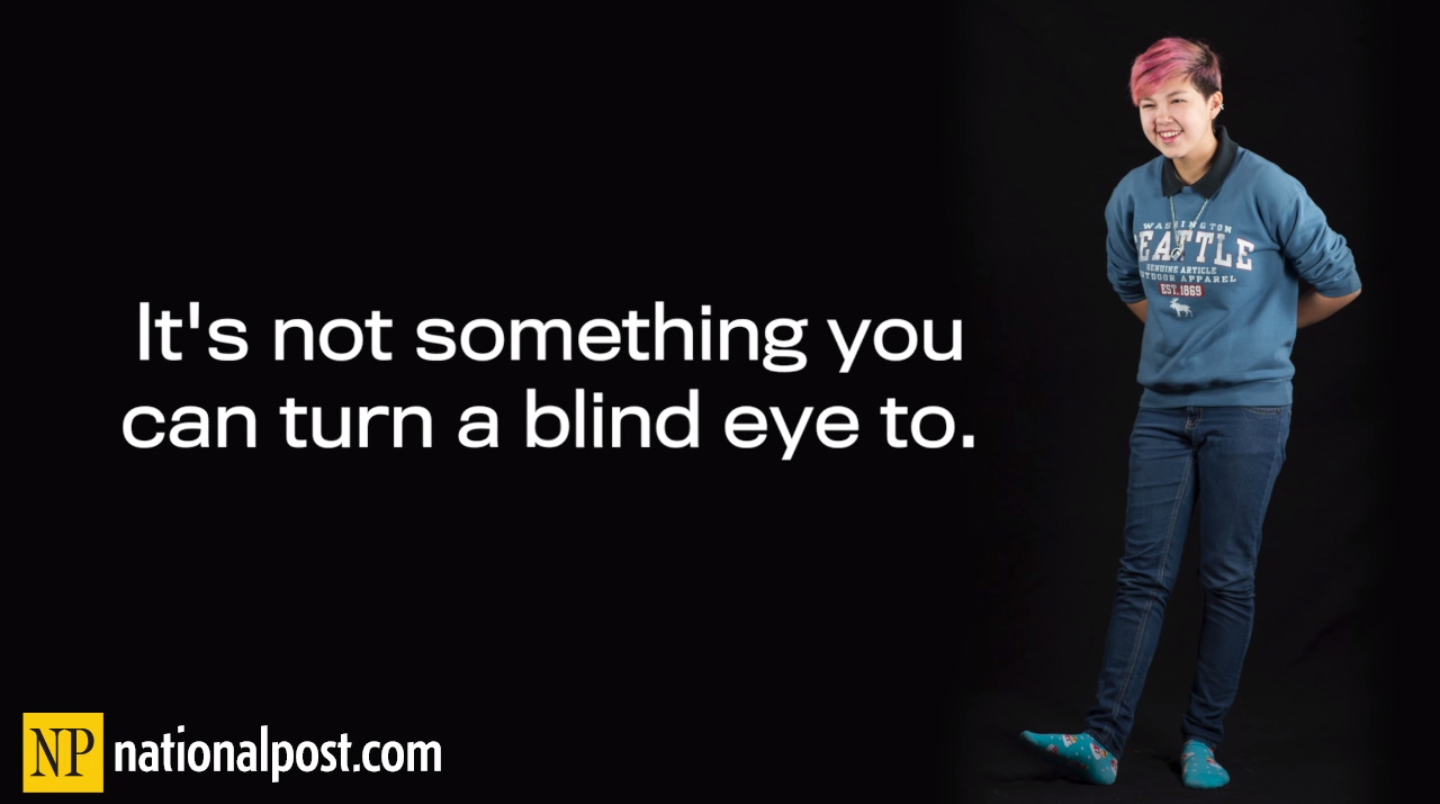How the National Post, Centennial College, and Maples Collegiate produced a multimedia project on the lives of young Aboriginal women.
[[{“fid”:”3802″,”view_mode”:”default”,”fields”:{“format”:”default”,”field_file_image_alt_text[und][0][value]”:””,”field_file_image_title_text[und][0][value]”:””},”type”:”media”,”attributes”:{“style”:”width: 300px; height: 173px; margin-left: 10px; margin-right: 10px; float: right;”,”class”:”media-element file-default”},”link_text”:null}]] By Chantal Braganza, Associate Editor
Last spring, National Post deputy editor Julie Traves came across a photography project hosted by Centennial College’s Kids Media Centre and journalism program that would stick with her for months.
Called “My Life in 20 Pictures,” it involved sending a group of Centennial students and faculty to Grassy Narrows First Nation in northwestern Ontario to teach elementary school students how to document their lives in pictures. The resulting photo essays were published online and also exhibited as part of Scotiabank’s 2014 CONTACT Photography Festival.
“I was really moved and impressed by this,” said Traves. “When I came to the Post, I was thinking about what we could do to contribute to the discussion of murdered and missing indigenous women that would be different and give voice to the community itself. Particularly with young people, because you so rarely hear from them, even though we do a lot of reporting on them.”
According to a 2014 RCMP report, nearly 1,200 Aboriginal women across Canada have been murdered or confirmed missing between 1980 and 2012—a staggering number that has been widely discussed in the press and whose coverage has escalated following high-profile cases such as the murder of Winnipeg teen Tina Fontaine and the brutal attacks on 16-year-old Rinelle Harper last year.
“I think the coverage that’s out there is important—it’s important to follow the politics of the issue and keep informed,” Traves said. “But I thought it would be interesting to look forward. What would it be like if you were a girl like Tina Fontaine or Rinelle Harper reading about all of this?”
A few months later, Traves contacted Centennial professor and journalism programs co-ordinator Tim Doyle, who’d participated in the Grassy Narrows project, to see if a similar program could be developed for a Post feature. The proposition: the project would be both educational and journalistic in nature. Twelve students at a Winnipeg-area high school would spend four days learning photojournalism skills to show what a young Aboriginal woman’s life is like in Canada today, while Post and Centennial student reporters compiled their own coverage.
“Their purpose there was two-fold,” said Doyle. “They were reporters and teachers.”
[node:related]
“Silent No More,” the result published earlier this month, told the stories of 12 students at Maples Collegiate high school in Winnipeg both from their perspective and that of the reporters.
This dual nature of the project put its participants in unfamiliar territory at times. “Listening is a fundamental skill to any type of reporting,” said Doyle. “This took that to an extreme in many ways.”
“It was tricky as a journalist,” said Post reporter and features writer Sarah Boesveld, who took part in the December 2014 workshop with photographer Tyler Anderson, Centennial journalism instructor Noreen Ahmed-Ullah and students Jennifer Lee and Samira Mohyeddin. “I felt partly like a teacher/instructor, someone they wanted to impress and make sure was happy with what they were doing.
“I also really cared about what these girls thought. We don’t have a good track record, as national media organizations based in Toronto, in helping to tell these stories.”
During the four-day program, the 12 teens participated in photography skills workshops and group brainstorming sessions developed in conjunction with staff and faculty at Maples Collegiate. Boesveld, Ahmed-Ullah, Lee and Mohyeddin conducted group chats with the young women and also one-on-one interviews in whatever set-up worked best for them: at the mall, on the way home from school, at home while putting up decorations for Christmas.
“The biggest challenge, as we started to listen to their stories, was making sure they were doing their own thing and illustrating a different piece of the story,” said Anderson of the photography portion of the program. He mentioned the hard time that Faith, one of the participants and a skilled painter and drawer, had with the photos. “Up until the last day she struggled because she wanted her picture to be great.”
“We got to talking…and that’s when we got that picture of her as a girl with the hats all over her head,” he said. “We really loved it.” To contextualize the photo, Faith placed the image in the larger background of the road that is her commute home. “She’s had run-ins on the streets while walking alone,” said Anderson, “and had this beautiful line about if this happens to me, the world is going to lose this little girl.”
The group spent so much time on the photography workshops that Anderson himself spent very little time taking photos. The 12 portraits of the participants were all taken in under 20 minutes.
In terms of follow-up, Traves said the Post will have its eye on the national roundtable on missing and murdered indigenous women being held in Ottawa on Feb. 27. “It’s not an event that’s open to press, but we’ll be keenly watching for what comes from it.”
They’ll also keep in touch. “Last [week] I face timed with them,” Boesveld said. “They were having a dinner to celebrate having their stories out there. I think they felt really empowered by the process. They were truly proud of themselves.”

